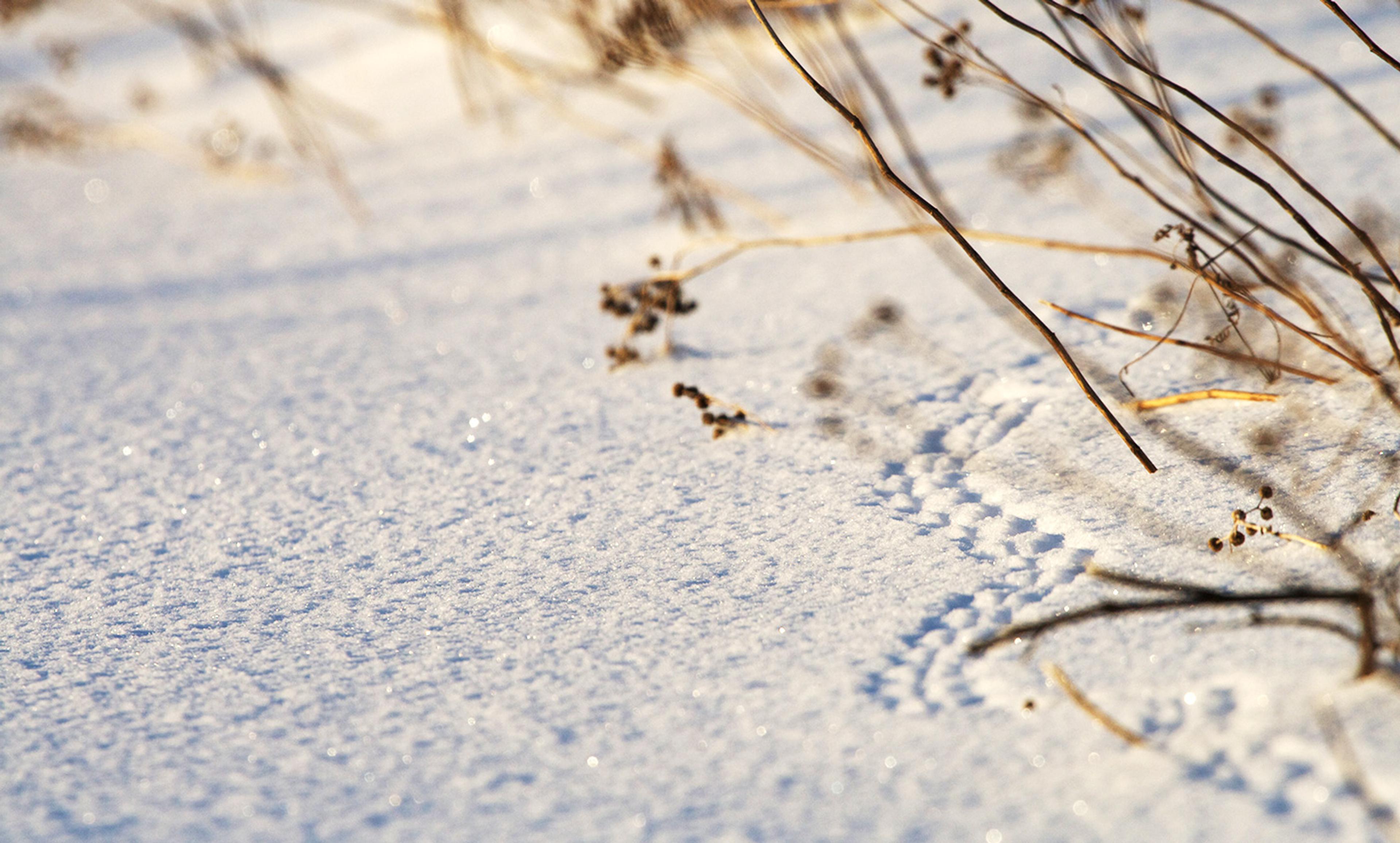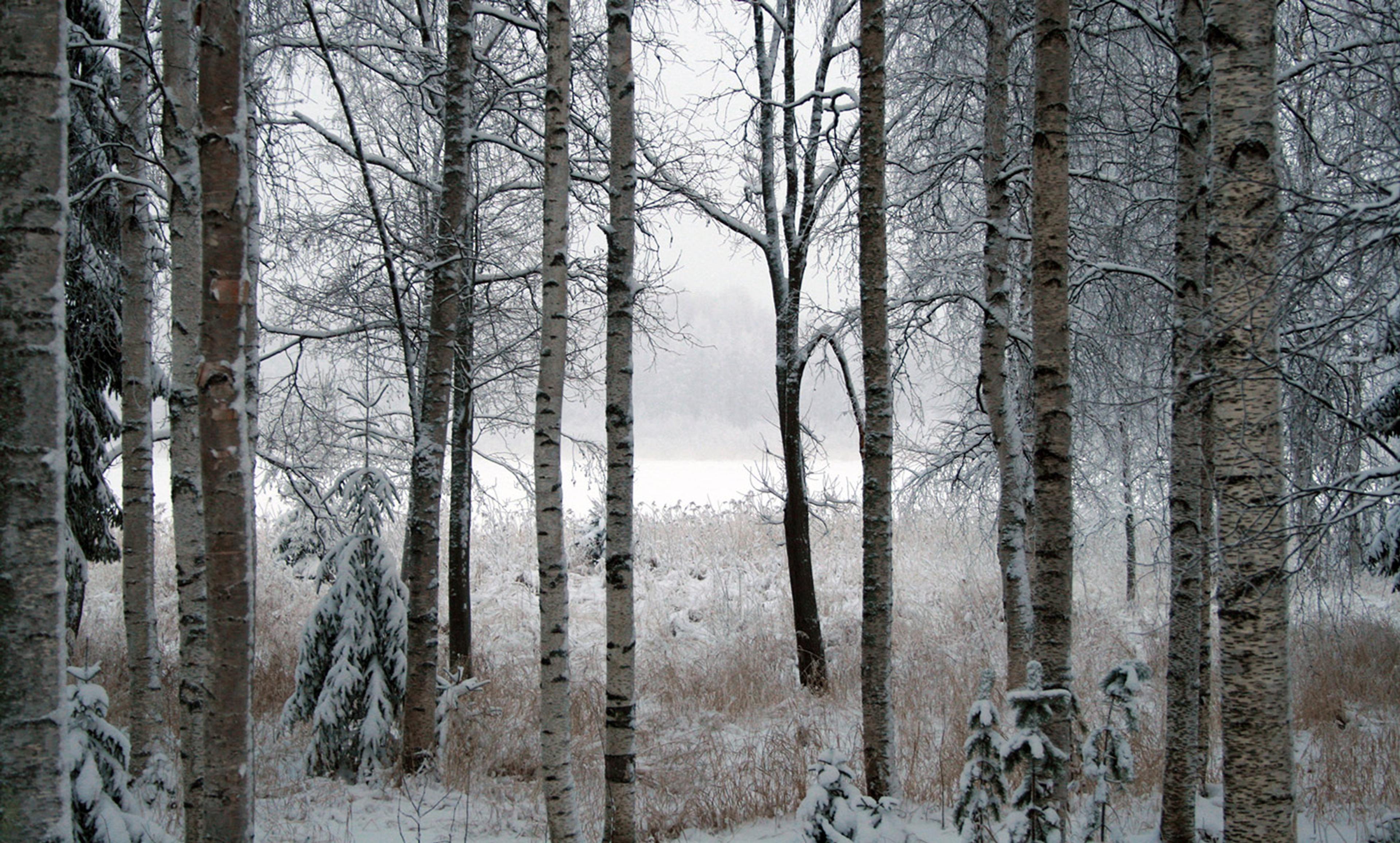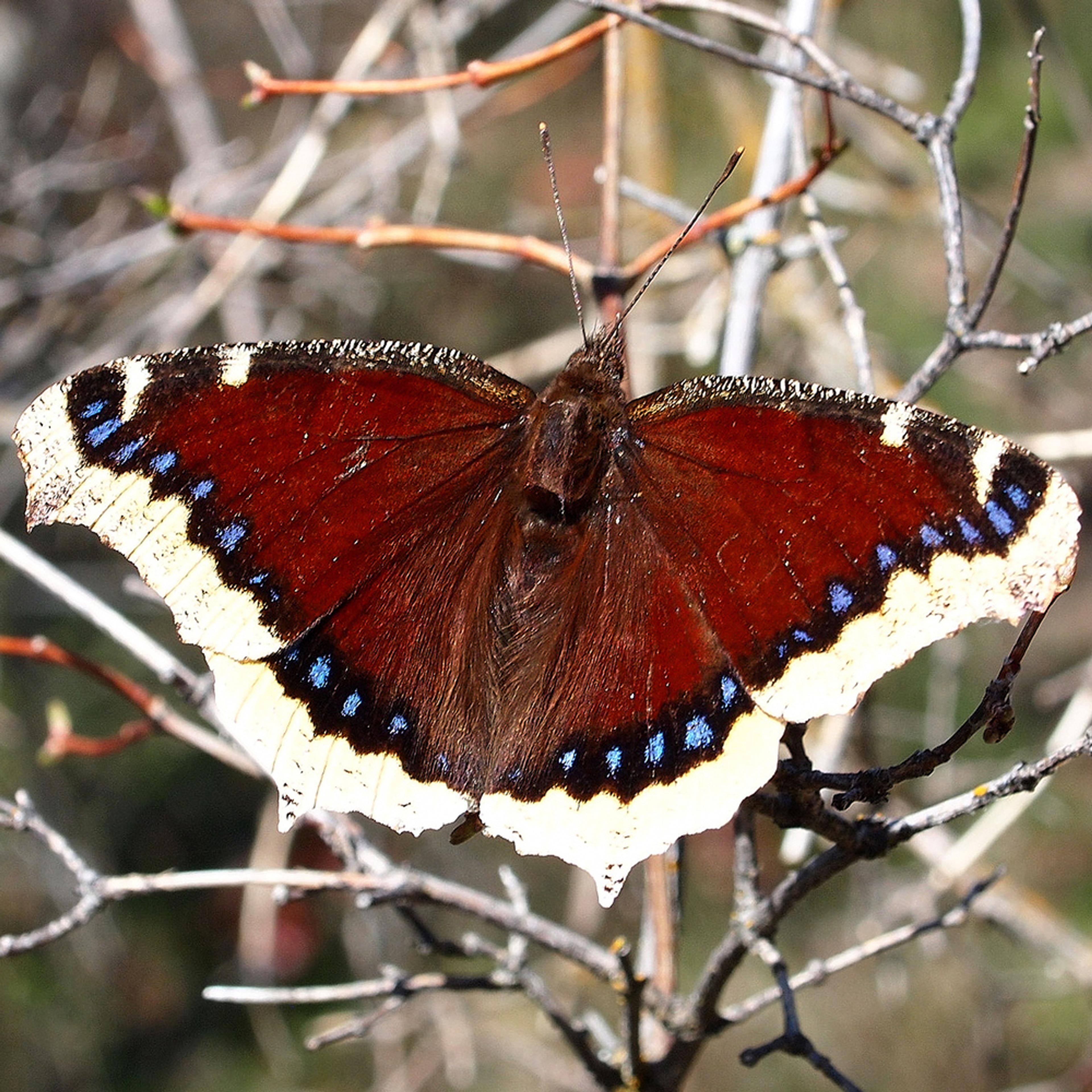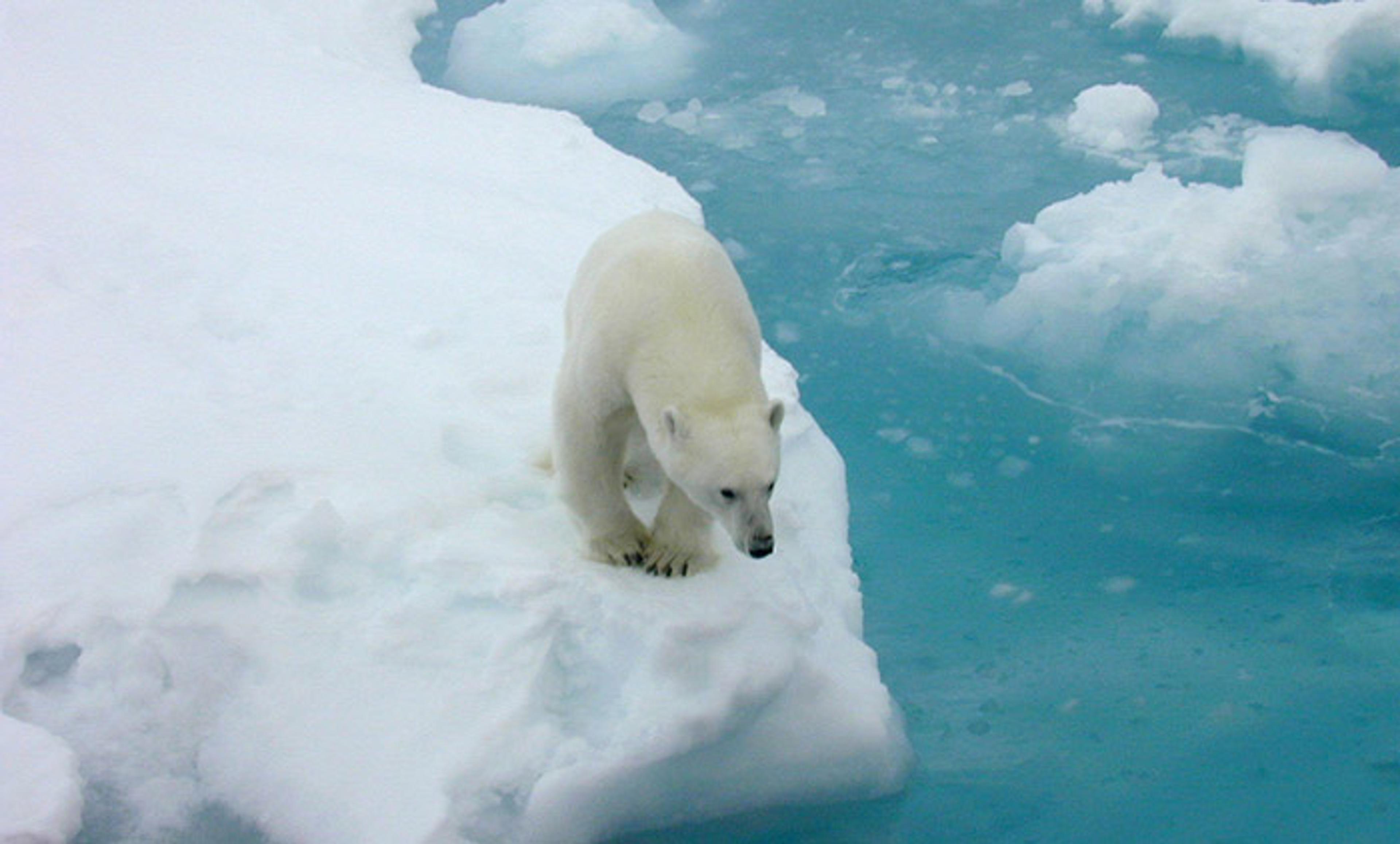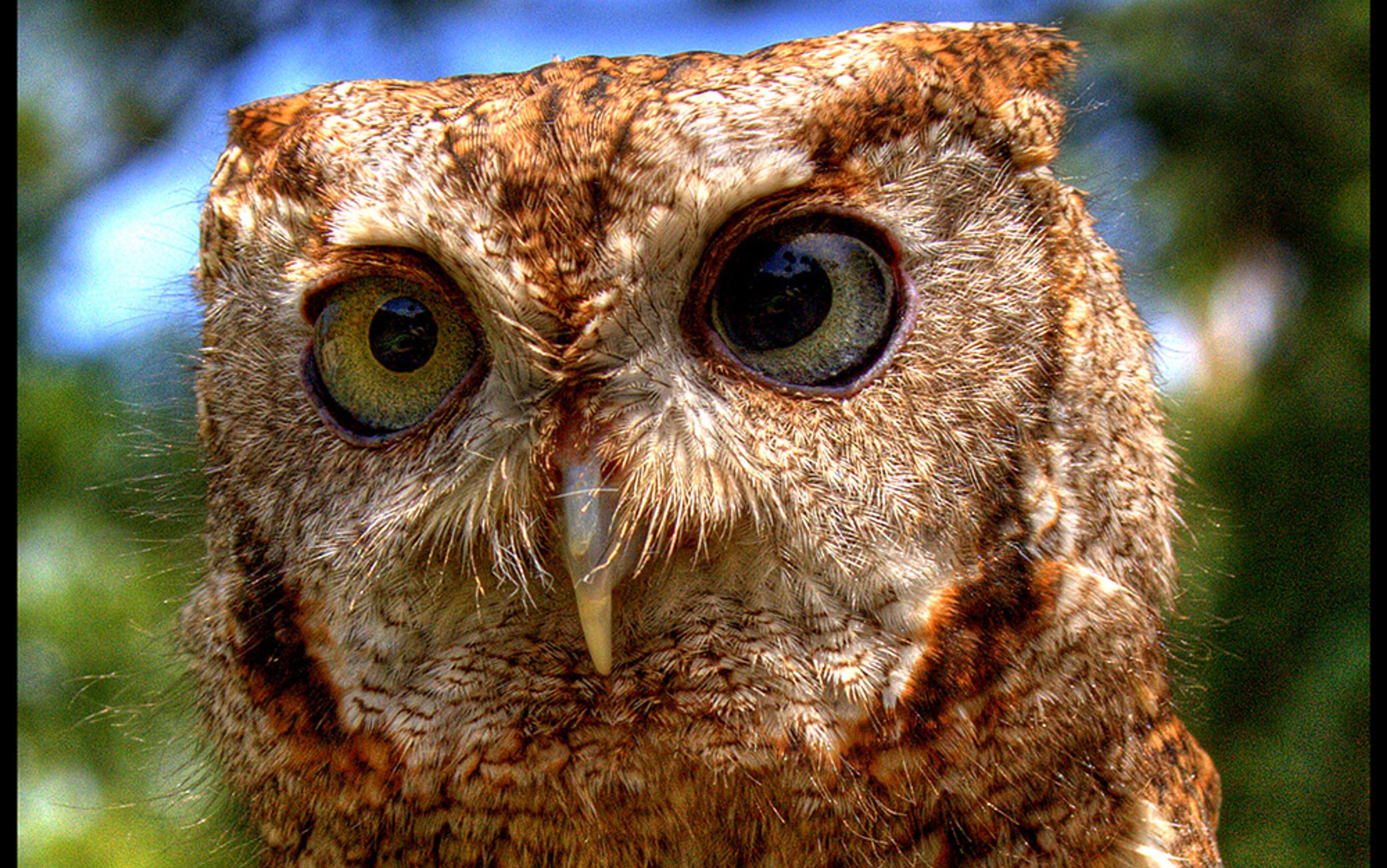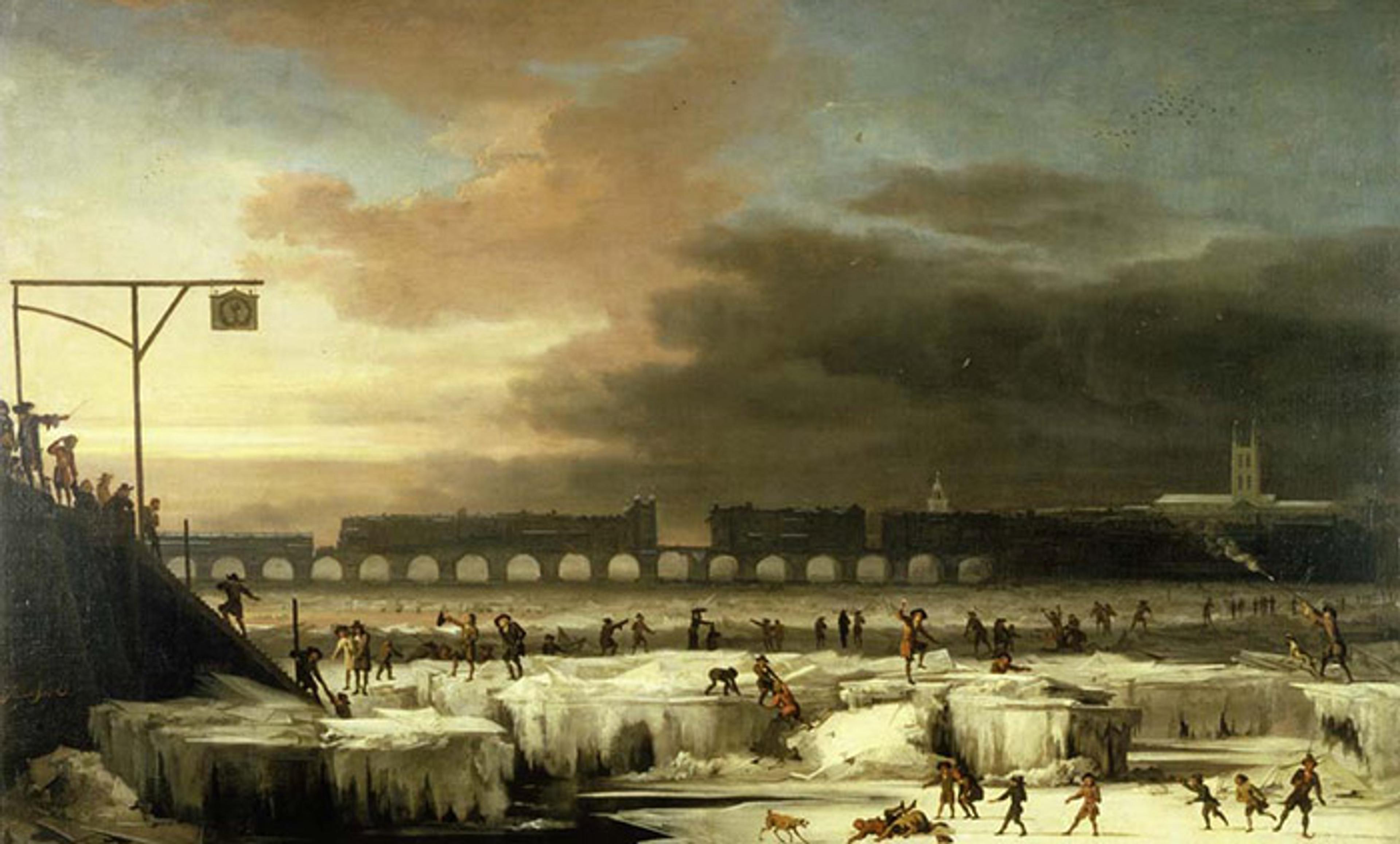Little tracks. Photo Matt MacGillivray/Flickr
Spring is in full bloom across the northern hemisphere, but it was not too long ago that the chilling winds of winter were bearing down upon us, and on all the living things around us. During the frigid season, even as we retreat indoors to escape the cold, it’s often necessary to nestle under a blanket to try to stay warm. The temperature difference between the blanket and the air outside is so palpable that we often have trouble leaving our warm refuge. Many plants and animals similarly hunker down, relying on snow cover for safety from winter’s harsh conditions. The small area between the snowpack and the ground, called the subnivium (from the Latin nivis for snow, and sub for below), might be the most important ecosystem that you have never heard of.
The subnivium is so well-insulated and stable that its temperature holds steady at around 32°F (0°C). Although that might still sound cold, a constant temperature of 32°F can often be 30 to 40 degrees warmer than the air temperature during the peak of winter. Because of this large temperature difference, a wide variety of species – birds such as the ruffed grouse and willow ptarmigan, mammals such as shrews and mice, and many species of mosses and grasses – depend on the subnivium for winter protection.
For many organisms living in temperate and Arctic regions, the difference between being under the snow or outside it is a matter of life and death. Consequently, disruptions to the subnivium brought about by climate change will affect everything from population dynamics to nutrient cycling through the ecosystem.
The formation and stability of the subnivium requires more than a few flurries. Winter ecologists have suggested that eight inches of snow is necessary to develop a stable layer of insulation. Depth is not the only factor, however. More accurately, the stability of the subnivium depends on the interaction between snow depth and snow density. Imagine being under a stack of blankets that are all flattened and pressed together. When compressed, the blankets essentially form one compacted layer. In contrast, when they are lightly placed on top of one another, their insulative capacity increases because the air pockets between them trap heat. Greater depths of low-density snow are therefore better at insulating the ground.
Both depth and density of snow are sensitive to temperature. Scientists are now beginning to explore how climate change will affect the subnivium, as well as the species that depend on it. At first glance, warmer winters seem beneficial for species that have difficulty surviving subzero temperatures; however, as with most ecological phenomena, the consequences are not so straightforward. Research has shown that the snow season (the period when snow is more likely than rain) has become shorter since 1970. When rain falls on snow, it increases the density of the snow and reduces its insulative capacity. Therefore, even though winters are expected to become warmer overall from future climate change, the subnivium will tend to become colder and more variable with less protection from the above-ground temperatures.
The effects of a colder subnivium are complex and multilayered. For example, shrubs such as crowberry and alpine azalea that grow along the forest floor tend to block the wind and so retain higher depths of snow around them. This captured snow helps to keep soils insulated and in turn increases plant decomposition and nutrient release. In field experiments, researchers removed a portion of the snow cover to investigate the importance of the subnivium’s insulation. They found that soil frost in the snow-free area resulted in damage to plant roots and sometimes even the death of the plant.
In addition, plants that are active in the subnivium, such as lingonberry shrubs and alpine buttercups, are crucial for the survival of small rodents, as well as larger animals such as hare and moose, all of which graze on plants under the snow. Rodents create tunnels throughout the subnivium, which allow them to search for food without being exposed to extreme air temperatures or dangerous predators. The plant litter and faeces left by these animals stimulates plant growth, and eventually supports further plant decomposition and nutrient release. Because of the many feedback loops that are inherent in ecology, loss of one species because of disturbances to the subnivium will have ripple effects throughout communities and through entire ecosystems.
At its core, ecology involves solving biological puzzles and discovering the complex relationships that drive communities and ecosystems. Often these relationships exist all around us – or right under our feet – without our notice. We have begun to uncover the key components of how the subnivium functions, but there is still much work to do. In order to determine how far-reaching the effects of climate change will be, we need to know more about how the subnivium will respond to warming temperatures, and also about how that response will affect the plants, animals and ecological communities that depend on it for winter survival.
Yet we already know some ways to mitigate some of the effects. For instance, land managers can restore and increase the coverage of the understory plants that promote snow cover. Through research and management, and simple increased awareness of our surroundings, we can help protect the communal blanket needed to keep everyone warm for the winter.
